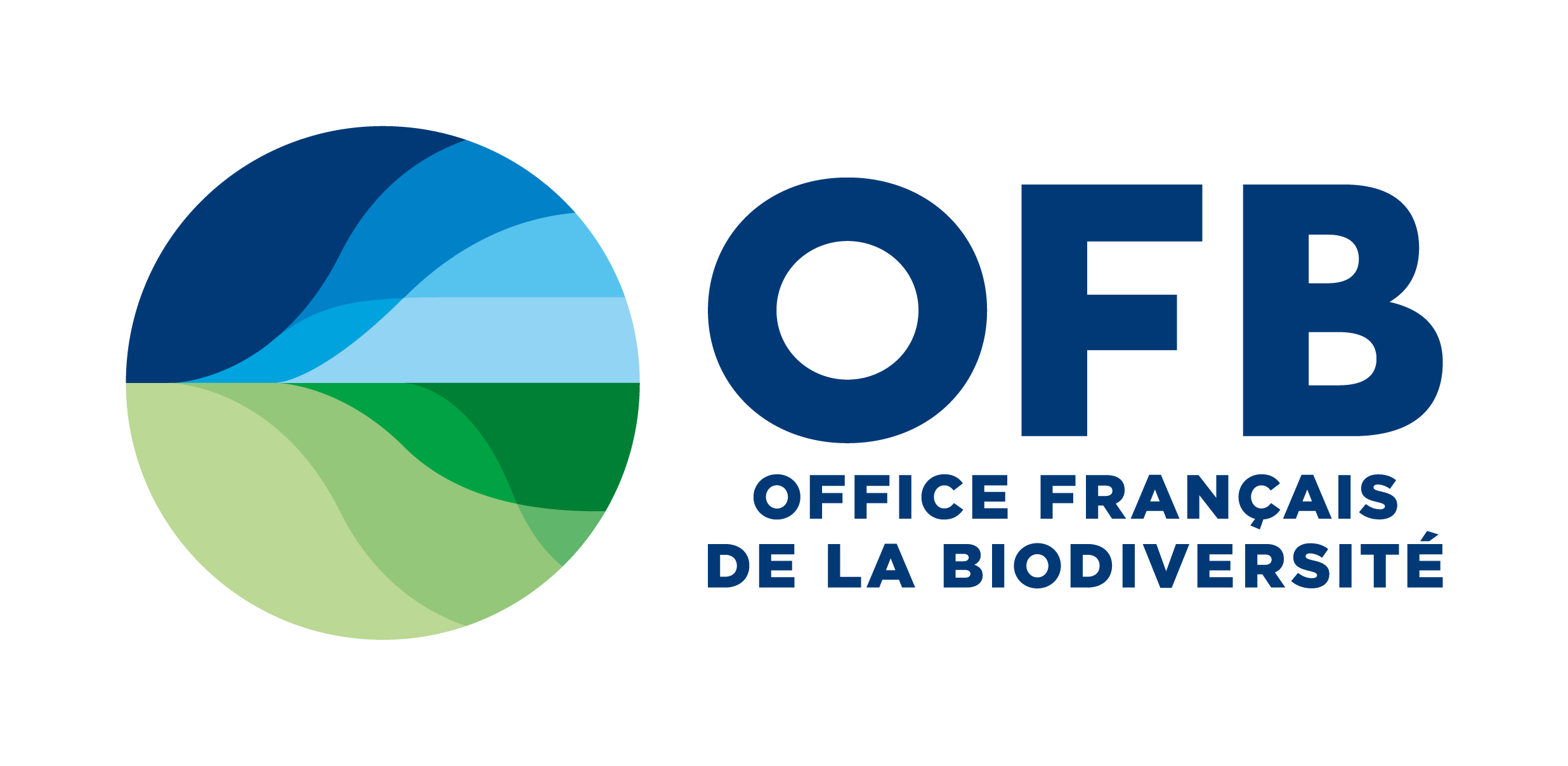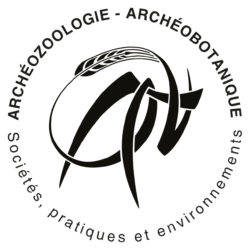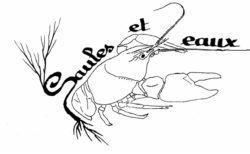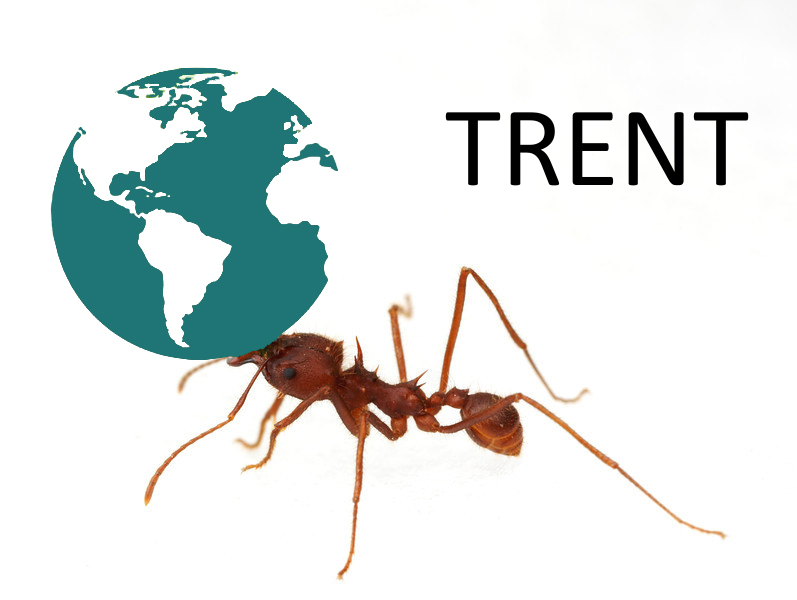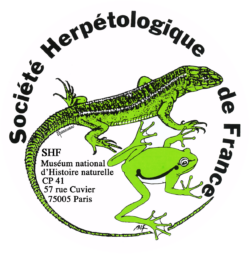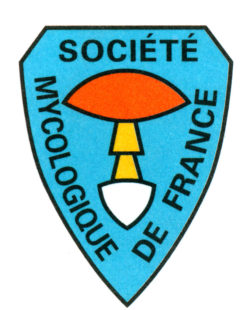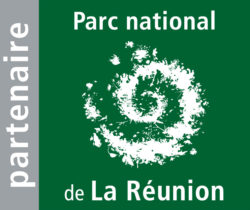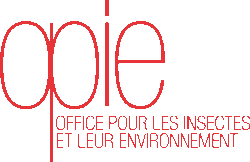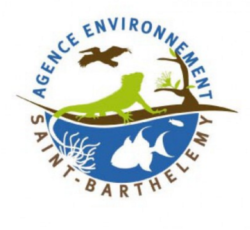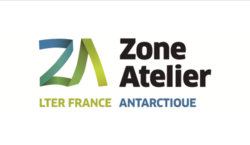Références bibliographiques relatives au groupe des mammifères
Pour trouver un mot, tapez celui-ci dans la barre de recherche de votre navigateur
Abdelkrim, J., & al. 2009. Genetic structure and functioning of alien ship rat populations from a Corsican micro-insular complex. Biological Invasions 11(3): 473-482. Lire
Adriaens, T., & al. 2015. Successful eradication of a suburban Pallas’s squirrel Callosciurus erythraeus (Pallas 1779) (Rodentia, Sciuridae) population in Flanders (northern Belgium). Biological Invasions 17(9): 2517-2526. Lire
Alda, F., & al. 2013. Genetic evidence for multiple introduction events of raccoons (Procyon lotor) in Spain. Biological Invasions 15(3): 687-698. Lire
Aloise G. & Bertolino S. 2005. Free-ranging population of the Finlayson’s squirrel Callosciurus finlaysonii(Horsfield, 1824) (Rodentia, Sciuridae) in South Italy. Hystrix, the Italian Journal of Mammalogy, 16(1). Lire
Anderson, A. 2009. The rat and the octopus: initial human colonization and the prehistoric introduction of domestic animals to Remote Oceania. Biological Invasions 11(7): 1503-1519. Lire
Angel, A., & al. 2009. Review of impacts of the introduced house mouse on islands in the Southern Ocean: are mice equivalent to rats? Biological Invasions 11(7): 1743-1754. Lire
Athens, J. S. 2009. Rattus exulans and the catastrophic disappearance of Hawai’i’s native lowland forest. Biological Invasions 11(7): 1489-1501. Lire
Averill, K. M., & al. 2016. Deer feeding selectivity for invasive plants. Biological Invasions 18(5): 1247-1263. Lire
Baig, M., & al. 2019. Phylogeography of the black rat Rattus rattus in India and the implications for its dispersal history in Eurasia. Biological Invasions 21(2): 417-433. Lire
Barrios-Garcia, M. N. & Ballari, S. 2012. Impact of wild boar (Sus scrofa) in its introduced and native range: a review. Biological Invasions 14(11): 2283-2300. Lire
Barros, Á., & al. 2016. Behavioural plasticity in nest-site selection of a colonial seabird in response to an invasive carnivore. Biological Invasions 18(11): 3149-3161. Lire
Bartolommei, P., & al. 2013. First report on the distribution of the American mink Neovison vison(Mammalia: Mustelidae) in central Italy. Italian Journal of Zoology 80(3): 455-461. Lire
Barun, A., & al. 2010. Impact of the small Indian mongoose on native amphibians and reptiles of the Adriatic islands, Croatia. Animal Conservation 13(6): 549-555. Lire
Beaucournu, J.C., Pisanu, B. & Chapuis, J.-L. 2008. Enderleinellus tamiasis Fahrenholz, 1916 (Anoploura : Enderleinellidae), espèce importée, implantée et nouvelle pour la Faune de France. Parasite, 15 : 175-178. Lire
Bertolino, S., & al. 2000. Native and alien squirrels in Italy. Hystrix, the Italian Journal of Mammalogy 11(2): 65-74. Lire
Bertolino, S. Genovesi, P. 2005. The application of the European strategy on invasive alien species: an example with introduced squirrels. Hystrix, the Italian Journal of Mammalogy. Hystrix, the Italian Journal of Mammalogy 16(1): 59-69. Lire
Bertolino, S. & Viterbi, R. 2010. Long-term cost-effectiveness of coypu (Myocastor coypus) control in Piedmont (Italy). Biological Invasions 12(8): 2549-2558. Lire
Bertolino, S., & al. 2014. A grey future for Europe: Sciurus carolinensis is replacing native red squirrels in Italy. Biological Invasions 16(1): 53-62. Lire
Biedrzycka, A., & al. 2014. The genetic structure of raccoon introduced in Central Europe reflects multiple invasion pathways. Biological Invasions 16(8): 1611-1625. Lire
Bird, P., & al. 2012. Damage caused by low-density exotic herbivore populations: the impact of introduced European rabbits on marsupial herbivores and Allocasuarina and Bursaria seedling survival in Australian coastal shrubland. Biological Invasions 14(3): 743-755. Lire
Bode, M., & al. 2013. Interior fences can reduce cost and uncertainty when eradicating invasive species from large islands. Methods in Ecology and Evolution 4(9): 819-827. Lire
Bodey, T., &al. 2011. Localised control of an introduced predator: creating problems for the future? Biological Invasions 13(12): 2817-2828. Lire
Bolfikova, B., & al. 2013. Population biology of establishment in New Zealand hedgehogs inferred from genetic and historical data: conflict or compromise? Mol Ecol 22(14): 3709-3720. Lire
Bonnaud, E., & al. 2015. Island specificities matter: cat diet differs significantly between islands of a major breeding archipelago for a vulnerable endemic seabird. Biological Invasions 17(10): 2927-2941. Lire
Bonnaud, E., & al. 2011. The diet of feral cats on islands: a review and a call for more studies. Biological Invasions 13(3): 581-603. Lire
Bonnet, S., & al. 2015. Infection of Siberian chipmunks (Tamias sibiricus barberi) with Borrelia sp. reveals a low reservoir competence under experimental conditions. Ticks and Tick-borne Diseases 6:393-400. Lire
Borroto-Páez, R. 2009. Invasive mammals in Cuba: an overview. Biological Invasions 11(10): 2279-2290. Lire
Bourgeois, K., & al. 2013. Dramatic increase in the Zembretta Yelkouan shearwater breeding population following ship rat eradication spurs interest in managing a 1500-year old invasion. Biological Invasions15(3): 475-482. Lire
Bovendorp, S. R. & Galetti, M. 2007. Density and population size of mammals introduced on a land-bridge island in southeastern Brazil. Biological Invasions 9(3): 353-357. Lire
Boyer, N., & al. 2010. Personality, space use, and tick load in an introduced population of Siberian chipmunks, Tamias sibiricus. Journal of Animal Ecology, 79: 538-547. Lire
Braschi, J., & al. 2015. Eradications simultanées du rat noir (Rattus rattus) et des griffes de sorcière (Carpobrotus spp.) sur l’île de Bagaud (parc national de Port-Cros, Provence, France) : résultats préliminaires des conséquences sur les communautés d’arthropodes. Revue d’écologie 70, Suppl. 12: 91-98. Lire
Bridgman, L. J. 2012. Interactions between ship rats and house mice, University of Waikato. Doctor of Philosophy (PhD): 243. Lire
Brzeziński, M., & al. 2019. Expansion and population dynamics of a non-native invasive species: the 40-year history of American mink colonisation of Poland. Biological Invasions 21(2): 531-545. Lire
Calvino-Cancela, M. 2010. Seed dispersal of alien and native plants by vertebrate herbivores. Biological Invasions 13(4): 895-904. Lire
Can, & al. 2013. Host-Parasite Relationship of Ticks (Acari: Ixodidae and Argasidae) and Feral Pigs (Sus scrofa) in the Nhecolândia Region of the Pantanal Wetlands in Mato Grosso do Sul. ISRN Parasitology2013: 6. Lire
Capellini, I., et al. 2015. The role of life history traits in mammalian invasion success. Ecology Letters18(10): 1099-1107. Lire
Caravaggi, A., & al. 2017. Niche overlap of mountain hare subspecies and the vulnerability of their ranges to invasion by the European hare; the (bad) luck of the Irish. Biological Invasions 19(2): 655-674. Lire
Carlsson, N. O. L., & al. 2009. Long-term data on invaders: when the fox is away, the mink will play. Biological Invasions 12(3): 633-641. Lire
Caut, S., & al. 2008. Avoiding surprise effects on Surprise Island: alien species control in a multitrophic level perspective. Biological Invasions 11(7): 1689-1703. Lire
Chapuis, J.-L. 2005. Répartition en France d’un animal de compagnie naturalisé, le Tamia de Sibérie (Tamias sibiricus). Revue d’Ecologie (Terre Vie), 60 : 239-253. Lire
Chapuis, J.-L. 2012. Plan national de lutte relatif à l’écureuil à ventre rouge dans les Alpes-Maritimes: 6 pp. Lire
Chapuis, J.-L., & al. 2010. Borréliose de Lyme : situation générale et conséquences de l’introduction en Ile-de-France d’un nouvel hôte, le Tamia de Sibérie. Bulletin épidémiologique hebdomadaire, Hors-série, 14 sept. 2010, 6-8. Lire
Chapuis, J.-L., & al. 2011. Datasheet on Tamias sibiricius. CABI, Wallingford, UK. http://www.cabi.org/isc.
Chimera, C. G. & Drake, D. R. 2010. Could poor seed dispersal contribute to predation by introduced rodents in a Hawaiian dry forest? Biological Invasions 13(4): 1029-1042. Lire
Chynoweth, M., & al. 2013. Biology and Impacts of Pacific Island Invasive Species. Capra hircus, the Feral Goat (Mammalia: Bovidae). Pacific Science 67(2): 141-156. Lire
Ćirović, D.,& al. 2010. Small Indian Mongoose Herpestes auropunctatus (Herpestidae, Carnivora): an invasive species in Montenegro. Biological Invasions 13(2): 393-399. Lire
Civantos, E., & al. 2012. Potential Impacts of Climate Change on Ecosystem Services in Europe: The Case of Pest Control by Vertebrates. BioScience 62(7): 658-666. Lire
Cole, R. J. & C. M. Litton. 2013. Vegetation response to removal of non-native feral pigs from Hawaiian tropical montane wet forest. Biological Invasions 16(1): 125-140. Lire
Conroy, C. J., & al. 2012. Cryptic genetic diversity in Rattus of the San Francisco Bay region, California. Biological Invasions 15(4): 741-758. Lire
Cove, M. V.,& al. 2018. Free-ranging domestic cats (Felis catus) on public lands: estimating density, activity, and diet in the Florida Keys. Biological Invasions 20(2): 333-344. Lire
Croll, D. A.& al. 2016. Passive recovery of an island bird community after rodent eradication. Biological Invasions 18(3): 703-715. Lire
Croquet, V., Cugnasse, J.-M., 2013. Le Mouflon à manchettes (Ammotragus lervia, Pallas, 1777) dans la Montagne Sainte-Victoire (Bouches-du-Rhône), ONCFS: 13 pp.
Cubas, J., & al. 2018. Contrasting effects of invasive rabbits on endemic plants driving vegetation change in a subtropical alpine insular environment. Biological Invasions 20(3): 793-807. Lire
Davis, A. J., et al. 2018. Quantifying site-level usage and certainty of absence for an invasive species through occupancy analysis of camera-trap data. Biological Invasions 20(4): 877-890. Lire
Delibes, M., & al. 2004. Potential Impact of an Exotic Mammal on Rocky Intertidal Communities of Northwestern Spain. Biological Invasions 6(2): 213-219. Lire
Di Febbraro, M., & al. 2013. The Use of Climatic Niches in Screening Procedures for Introduced Species to Evaluate Risk of Spread: A Case with the American Eastern Grey Squirrel. PLoS ONE 8(7): e66559. Lire
Dingerkus, S. K. & W. I. Montgomery. 2001. The diet and landclass affinities of the Irish hare Lepus timidus hibernicus. Journal of Zoology 253(2): 233-240. Lire
Doherty, T. S., & al. 2016. Invasive predators and global biodiversity loss. Proceedings of the National Academy of Sciences 113(40): 11261-11265. Lire
Donlan, C. J. & C. Wilcox 2007. Integrating invasive mammal eradications and biodiversity offsets for fisheries bycatch: conservation opportunities and challenges for seabirds and sea turtles. Biological Invasions 10(7): 1053-1060. Lire
Dozières, A. 2012. Conservation de l’Ecureuil roux en France : De l’état des populations aux enjeux liés à l’introduction de l’Ecureuil à ventre rouge. Paris, Muséum national d’Histoire naturelle. Phd: 238. Lire
Dozières, A., & al. 2010. Macroparasites of Pallas’s squirrels, Callosciurus erythraeus, introduced into Europe. Veterinary Parasitology, 172: 172-176. Lire
Dozières, A., & al. 2015. Range expansion of Pallas’s squirrel (Callosciurus erythraeus) introduced in southern France: habitat suitability and space use. Mammalian Biology, 80: 518–526. Lire
Drake, D. R. & Hunt, T. L. 2008. Invasive rodents on islands: integrating historical and contemporary ecology. Biological Invasions 11(7): 1483-1487. Lire
Drygala, F. & Zoller, H.2013. Spatial use and interaction of the invasive raccoon dog and the native red fox in Central Europe: competition or coexistence? European Journal of Wildlife Research 59(5): 683-691. Lire
Duron, Q., & al. 2017. Comparative effects of native frugivores and introduced rodents on seed germination in New-Caledonian rainforest plants. Biological Invasions 19(1): 351-363. Lire
Elledge, A. E., & al. 2012. Modelling habitat preferences of feral pigs for rooting in lowland rainforest. Biological Invasions 15(7): 1523-1535. Lire
Ruys, T., & al. 2011. Le Raton-laveur en Gironde, une nouvelle espèce pour l’Aquitaine. Bordeaux : 4 pp. Lire
Fautley, R., & al. 2012. A comparative analysis of the factors promoting deer invasion. Biological Invasions14(11): 2271-2281. Lire
Fischer, M. L., & al. 2016. Assessing and predicting the spread of non-native raccoons in Germany using hunting bag data and dispersal weighted models. Biological Invasions 18(1): 57-71. Lire
Frantz, A. C., & al. 2013. Limited mitochondrial DNA diversity is indicative of a small number of founders of the German raccoon (Procyon lotor) population. European Journal of Wildlife Research 59(5): 665-674. Lire
Fraser, E. J., & al. 2013. Using population genetic structure of an invasive mammal to target control efforts – An example of the American mink in Scotland. Biological Conservation 167: 35-42. Lire
Fukasawa, K., & al. 2013. Reconstruction and prediction of invasive mongoose population dynamics from history of introduction and management: a Bayesian state-space modelling approach. Journal of Applied Ecology 50(2): 469-478. Lire
Galan, P. 2013. Depredación de gato doméstico sobre reptiles en Galicia Pedro Galán. Bol. Asoc. Herpetol. Esp. 24(1): 1-4. Lire
García, K., & al. 2017. Spatial mixing of mitochondrial lineages and greater genetic diversity in some invasive populations of the American mink (Neovison vison) compared to native populations. Biological Invasions 19(9): 2663-2673. Lire
García-Díaz, P., & al. 2013. The impact of the American mink (Neovison vison) on native vertebrates in mountainous streams in Central Spain. European Journal of Wildlife Research 59(6): 823-831. Lire
García, J. T., & al. 2011. Recent invasion and status of the raccoon (Procyon lotor) in Spain. Biological Invasions 14(7): 1305-1310. Lire
Gargan, L.M. et al. 2016. Molecular and morphological insights into the origin of the invasive greater white-toothed shrew (Crocidura russula) in Ireland. Biological Invasions, 18(3), 857-871. Lire
Gaubert, P., & al. 2008. Early phases of a successful invasion: mitochondrial phylogeography of the common genet (Genetta genetta) within the Mediterranean Basin. Biological Invasions 11(3): 523-546. Lire
Genovesi, P., & al. 2009. Alien Mammals of Europe. DAISIE, Handbook of Alien Species in Europe. S. S. B. M. B. V. 2009. Early phases of a successful invasion: mitochondrial phylogeography of the common genet (Genetta genetta) within the Mediterranean Basin. Biological Invasions 11(3): 523-546. Lire
Gérard, A., & al. 2015. Anti-predator behaviour in procellarid seabirds: wedge-tailed shearwater do not respond to the odour of introduced black rat. Aust. Ecol. 40: 775-781. doi: 10.1111/aec.12252. Lire
Gizicki, Z. S., & al. 2018. Long-term effects of feral goats (Capra hircus) on Mediterranean island communities: results from whole island manipulations. Biological Invasions 20(6): 1537-1552. Lire
Goldstein, E. A., & al. 2016. Modeling future range expansion and management strategies for an invasive squirrel species. Biological Invasions 18(5): 1431-1450. Lire
Guichón, M. L., & al. 2015. From a lag in vector activity to a constant increase of translocations: invasion of Callosciurus squirrels in Argentina. Biological Invasions 17(9): 2597-2604. Lire
Harris, D. B., & al. 2011. Island prioritization for invasive rodent eradications with an emphasis on reinvasion risk. Biological Invasions 14(6): 1251-1263. Lire
Hayes, W. K., & al. 2012. Do invasive rodents impact endangered insular iguana populations? Biodiversity and Conservation 21(7): 1893-1899. Lire
Henn, J. J., & al. 2016. Landscape-level impact and habitat factors associated with invasive beaver distribution in Tierra del Fuego. Biological Invasions 18(6): 1679-1688. Lire
Hervías, S., & al. 2012. Studying the effects of multiple invasive mammals on Cory’s shearwater nest survival. Biological Invasions 15(1): 143-155. Lire
Hughes, J. & Macdonald, D. W. 2013. A review of the interactions between free-roaming domestic dogs and wildlife. Biological Conservation 157: 341-351. Lire
Iannella, A., & al. 2019. Genetic perspectives on the historical introduction of the European rabbit (Oryctolagus cuniculus) to Australia. Biological Invasions 21(2): 603-614. Lire
Iordan, F., & al. 2012. Predicting the spread of feral populations of the American mink in Italy: is it too late for eradication? Biological Invasions 14(9): 1895-1908. Lire
Jacquot, M., & al. 2014. High-throughput sequence typing reveals genetic differenciation and host specialization among populations of the Borrelia burgdorferi species complex that infect rodents. PLoS ONE, 9(2):e88581. Lire
Jaksic, F. M., & al. 2002. Invaders Without Frontiers: Cross-border Invasions of Exotic Mammals. Biological Invasions 4(1): 157-173. Lire
James, A. I., & al. 2011. Can the invasive European rabbit (Oryctolagus cuniculus) assume the soil engineering role of locally-extinct natives? Biological Invasions 13(12): 3027-3038. Lire
Jessen, T., & al. 2018. Habitat fragmentation provides a competitive advantage to an invasive tree squirrel, Sciurus carolinensis. Biological Invasions 20(3): 607-618. Lire
Kalb, D. M. & J. L. Bowman. 2017. A complete history of the establishment of Japanese sika deer on the Delmarva Peninsula: 100 years post-introduction. Biological Invasions 19(6): 1705-1713. Lire
King, C. M. 2017. Pandora’s box down-under: origins and numbers of mustelids transported to New Zealand for biological control of rabbits. Biological Invasions 19(6): 1811-1823. Lire
King, C. M. 2016. How genetics, history and geography limit potential explanations of invasions by house mice Mus musculus in New Zealand. Biological Invasions 18(6): 1533-1550. Lire
King, C., & al. 2016. What can the geographic distribution of mtDNA haplotypes tell us about the invasion of New Zealand by house mice Mus musculus? Biological Invasions 18(6): 1551-1565. Lire
Klima, K. & Travis, S. E. 2012. Genetic population structure of invasive nutria (Myocastor coypus) in Louisiana, USA: is it sufficient for the development of eradication units? Biological Invasions 14(9): 1909-1918. Lire
Knox, C. D., & al. 2012. Direct and Indirect Effects of Grazing by Introduced Mammals on a Native, Arboreal Gecko (Naultinus gemmeus). Journal of Herpetology 46(2): 145-152. Lire
Komine, H., & al. 2016. Relationships between capture-site characteristics and capture levels of the invasive mongoose on Amami-Oshima Island, Japan. Biological Invasions 18(2): 487-495. Lire
Krebs, E., & al. 2015. Réponses des populations de reptiles à l’éradication du rat noir (Rattus rattus) sur l’île de Bagaud (Parc National de Port-Cros, Var, France). Revue dÉcologie, 70(12), 99-109. Lire
Lack, J. B., & al. 2012. Invasion facilitates hybridization with introgression in the Rattus rattus species complex. Mol Ecol 21(14): 3545-3561. Lire
Lack, J. B., & al. 2012. Comparative phylogeography of invasive Rattus rattus and Rattus norvegicus in the U.S. reveals distinct colonization histories and dispersal. Biological Invasions 15(5): 1067-1087. Lire
Latham, A. D. M., & al. 2017. The ecology and management of mammal invasions in forests. Biological Invasions 19(11): 3121-3139. Lire
Latham, A. D. M., & al. 2018. Assessing the efficacy of aerial culling of introduced wild deer in New Zealand with analytical decomposition of predation risk. Biological Invasions 20(1): 251-266. Lire
Latham, A. D. M., & al. 2015. Climate change turns up the heat on vertebrate pest control. Biological Invasions 17(10): 2821-2829. Lire
Le Coeur, C., & al. 2016. Inter-annual and inter-individual variations in survival exhibit strong seasonality in a hibernating rodent. Oecologia, 181:795–807. Lire
Le Coeur, C. 2015. Stratégies d’histoire de vie chez un Sciuridé introduit, le Tamia de Sibérie (Tamias sibiricus). Thèse de doctorat, MNHN, 227 p. Lire
Le Coeur, C., & al. 2015. Seasonal variation in infestations by Ixodids on Siberian chipmunks: effects of host age, sex and birth season. Parasitology Research 114:2069-78. Lire
Le Coeur, C., & al. 2015. Temporally fluctuating selection on a personality trait in a wild rodent population. Behavioral Ecology, 26:1285-1291. Lire
Lehr Brisbin, I., Mayer, J. J. 2001. Problem Pigs in a Poke: a good pool of data. Science’s Compass. 294: 1280-1281.
Lewis, D. S., & al. 2011. Conservation implications of small Indian mongoose (Herpestes auropunctatus) predation in a hotspot within a hotspot: the Hellshire Hills, Jamaica. Biological Invasions 13(1): 25-33. Lire
Lizarralde, M. S., & al. 2007. Assessing genetic variation and population structure of invasive North American beaver (Castor Canadensis Kuhl, 1820) in Tierra Del Fuego (Argentina). Biological Invasions10(5): 673-683. Lire
Long, M. S., & al. 2017. Impact of nonnative feral pig removal on soil structure and nutrient availability in Hawaiian tropical montane wet forests. Biological Invasions 19(3): 749-763. Lire
Lorvelec, O., & al. 2007. Les mammifères terrestres non volants des Antilles françaises et l’introduction récente d’un écureuil. Revue d’Écologie (Terre Vie), 62 : 295-314. Lire
Lorvelec & al. 2004. Impacts des Mammifères allochtones sur quelques espèces autochtones de l’îlet Fajou (réserve naturelle du Grand Cul-de-Sac Marin, Guadeloupe), établis à l’issue d’une tentative d’éradication. Terre et vie, 15 p. Lire
Lorvelec, O., Pascal, M., & Pavis, C. 2001. Inventaire et statut des Mammifères des Antilles françaises (hors Chiroptères et Cétacés). Rapport AEVA, n°27, 22 p. Lire
Marmet, J. 2008. Traits d’histoire de vie du Tamia de Sibérie Tamias sibiricus, espèce exotique naturalisée dans la forêt de Sénart (Essonne) : démographie, biologie de la reproduction, occupation de l’espace et dispersion. Thèse de doctorat, MNHN, 171 p. Lire
Marmet, J. & Chapuis, J.-L. 2007. Répartition de l’Ecureuil de Corée (Tamias sibiricus), animal de compagnie exotique introduit en France : résultats de l’enquête nationale de 2005. Pp : 27-31, in : L. TILLON (ed), Les mammifères forestiers, 28ème Colloque de la SFEPM, 21-23 octobre 2005, Rambouillet (78), Collection dossiers forestiers, n° 18. Lire
Marmet J., Pisanu, B. & Chapuis, J.-L. 2009. Home range, range overlap and site fidelity of introduced Siberian chipmunks in a suburban French forest. European Journal of Wildlife Research, 55: 497-504. Lire
Marmet, J., Pisanu, B. & Chapuis, J.-L. 2011. Natal dispersal of introduced Siberian chipmunks, Tamias sibiricus, in a suburban forest. Journal of Ethology, 29: 23-29. Lire
Marmet, J., & al. 2012. Factors affecting male and female reproductive success in a chipmunk (Tamias sibiricus) with a scramble competition mating system. Behavioral Ecology and Sociobiology, 66: 1449-1457. Lire
Marsot, M. 2011. Modification du risque d’une maladie multi-hôtes suite à l’introduction d’une espèce réservoir : cas de la maladie de Lyme et du tamia de Sibérie en Ile-de-France. Thèse de doctorat, Univ. Clermont-Ferrand, 174 p. Lire
Marsot, M., & al. 2013. Introduced Siberian chipmunks (Tamias sibiricus barberi) contribute more to Lyme borreliosis risk than native reservoir rodents. PLoS ONE, 8(1): e55377. Lire
Marsot, M., & al. 2011. Introduced Siberian chipmunks (Tamias sibiricus barberi) harbour more diverse Borrelia burgdorferi sensu lato genospecies than native bank voles (Myodes glareolus). Applied and Environmental Microbiology 77: 5716-5721. Lire
Massé, A., & al. 2011. Le chat domestique en milieu naturel au Québec : une espèce exotique envahissante. La société Provancher d’Histoire naturelle du Canada : 32-42. Lire
Mazzamuto, M.V., & al. 2016. Poor parasite community of an invasive species: macroparasites of Pallas’s squirrel in Italy. Annales Zoologici Fennici, 53: 103-112. Lire
Mazzamuto, M. V., & al. 2017. Space invaders: effects of invasive alien Pallas’s squirrel on home range and body mass of native red squirrel. Biological Invasions 19(6): 1863-1877. Lire Lire
Mazzamuto, M. V., & al. 2017. Interspecific competition between alien Pallas’s squirrels and Eurasian red squirrels reduces density of the native species. Biological Invasions 19(2): 723-735. Lire
McLeod, R. 2004. Counting the Cost: Impact of Invasive Animals in Australia, 2004. Camberra: 82 pp. Lire
Medina-Vogel, G., & al. 2013. Coexistence between the southern river otter and the alien invasive North American mink in marine habitats of southern Chile. Journal of Zoology 290(1): 27-34. Lire
Melero, Y., & al. 2015. Density- and age-dependent reproduction partially compensates culling efforts of invasive non-native American mink. Biological Invasions 17(9): 2645-2657. Lire
Moutou, F. & Pastoret, P.-P. 2010. Invasive mammals. In P.-P. Pastoret, F. Moutou (coord.) 2010. Invasive species. Part 2 : concrete examples. Rev. sci. Tech. Off. Int. Epiz., 29 (2) : 209-216.
Mulder, C. P. H., & al. 2008. Direct and indirect effects of rats: does rat eradication restore ecosystem functioning of New Zealand seabird islands? Biological Invasions 11(7): 1671-1688. Lire
Mutze, G., & al. 2016. Density-dependent grazing impacts of introduced European rabbits and sympatric kangaroos on Australian native pastures. Biological Invasions 18(8): 2365-2376. Lire
Nørgaard, L. S., & al. 2017. Population genomics of the raccoon dog (Nyctereutes procyonoides) in Denmark: insights into invasion history and population development. Biological Invasions 19(5): 1637-1652. Lire
Nummi, P., & al. 2006. Alien Grazing: Indirect Effects of Muskrats on Invertebrates. Biological Invasions8(5): 993-999. Lire
ONCFS. 2017. Le Raton laveur. Dépliant ONCFS. 6p. Lire
Palmas, P., & al. 2017. Feral cats threaten the outstanding endemic fauna of the New Caledonia biodiversity hotspot. Biological Conservation 214(Supplement C): 250-259. Lire
Parker, H., & al. 2012. Invasive North American beaver Castor canadensis in Eurasia: a review of potential consequences and a strategy for eradication. Wildlife Biology 18(4): 354-365. Lire
Patou, M.-L., & al. 2009. Molecular phylogeny of the Herpestidae (Mammalia, Carnivora) with a special emphasis on the Asian Herpestes. Molecular Phylogenetics and Evolution 53(1): 69-80. Lire
Peay, K. G., & al. 2013. Rat invasion of islands alters fungal community structure, but not wood decomposition rates. Oikos 122(2): 258-264. Lire
Pepper, M. A., & al. 2017. Evaluation of nutria (Myocastor coypus) detection methods in Maryland, USA. Biological Invasions 19(3): 831-841. Lire
Pietrek, A. G. and M. González-Roglich. 2015. Post-establishment changes in habitat selection by an invasive species: beavers in the Patagonian steppe. Biological Invasions 17(11): 3225-3235. Lire
Pilot, M., & al. 2018. Widespread, long‐term admixture between grey wolves and domestic dogs across Eurasia and its implications for the conservation status of hybrids. Evolutionary Applications 0(0). Lire
Pisanu, B., & al. 2012. Narrow phylogeographic origin of five introduced populations of the Siberian chipmunk Tamias (Eutamias) sibiricus (Laxmann, 1769) (Rodentia: Sciuridae) established in France. Biological Invasions 15(6): 1201-1207. Lire
Pisanu, B., & al. 2007. Helminth fauna of the Siberian chipmunk, Tamias sibiricus Laxmann (Rodentia, Sciuridae) introduced in suburban French forests. Parasitology Research, 100: 1375-1379. Lire
Pisanu, B., Lebailleux, L. & Chapuis, J.-L. 2009. Why do Siberian chipmunks Tamias sibiricus (Sciuridae) introduced in French forests acquired so few intestinal helminth species from native sympatric Murids ? Parasitology Research, 104: 709-714. Lire
Pisanu, B., & al. J.-L. 2008. Diversité du cortège en Siphonaptères chez le tamia de Sibérie (Tamias sibiricus Laxmann) introduit en Forêt de Sénart (Ile-de-France). Parasite, 15: 35-43. Lire
Pisanu, B., & al. 2010. Introduced Siberian chipmunks are more heavily infested by ixodid ticks than are native bank voles in a suburban forest in France. International Journal for Parasitology, 40: 1277-1283. Lire
Pisanu, B., & al. 2013. Narrow phylogeographic origin of five introduced populations of the Siberian chipmunk Tamias (Eutamias) sibiricus (Laxmann, 1769) (Rodentia : Sciuridae) established in France. Biological Invasions, 15: 1201-1207. Lire
Prebble, M. & Wilmshurst, J. M. 2008. Detecting the initial impact of humans and introduced species on island environments in Remote Oceania using palaeoecology. Biological Invasions 11(7): 1529-1556. Lire
Rainbolt, R. E. & Coblentz, B. E. 1999. Restoration of Insular Ecosystems: Control of Feral Goats on Aldabra Atoll, Republic of Seychelles. Biological Invasions 1(4): 363-375. Lire
Recio, M. R., & al. 2017. Optimizing control programmes by integrating data from fine-scale space use by introduced predators. Biological Invasions 19(1): 209-221. Lire
Renner, M., & al. 2018. The risk of rodent introductions from shipwrecks to seabirds on Aleutian and Bering Sea islands. Biological Invasions 20(9): 2679-2690. Lire
Renteria-Solis, Z. M., & al. 2013. Alaria alata mesocercariae in raccoons (Procyon lotor) in Germany. Parasitol Res 112(10): 3595-3600. Lire
Ricca, M. A., & al. 2012. Range expansion of nonindigenous caribou in the Aleutian archipelago of Alaska. Biological Invasions 14(9): 1779-1784. Lire
Rodrigues, M., & al. 2017. Origin and introduction history of the least weasel (Mustela nivalis) on Mediterranean and Atlantic islands inferred from genetic data. Biological Invasions 19(1): 399-421. Lire + erratum Lire
Rolland, M., J., C. 2003. Le statut du Cerf Elaphe (Cervus elaphus) dans le département des Alpes-Maritimes. Toulouse, Paul-Sabatier. Docteur vétérinqire: 187 pp. Lire
Romeo, C., & al. 2014 Macroparasite fauna of alien grey squirrels (Sciurus carolinensis): composition, variability and implications for native species. PLoS ONE 9(2): e88002. Lire
Roy, S. S., & al. 2015. Removal of American mink (Neovison vison) from the Uists, Outer Hebrides, Scotland. Biological Invasions 17(10): 2811-2820. Lire
Ruffino, L. Krebs, & al. 2015. Eradications as scientific experiments: progress in simultaneous eradications of two major invasive taxa from a Mediterranean island. Pest Management Science, 71, 189-198. Lire
Ruffino, L. & Vidal, E. 2010. Early colonization of Mediterranean islands by Rattus rattus: a review of zooarcheological data. Biological Invasions 12(8): 2389-2394. Lire
Russell, J. C., & al. 2009. Early colonisation population structure of a Norway rat island invasion. Biological Invasions 11(7): 1557-1567. Lire
Saint-Andrieux, C., Barboiron, A., Guibert, B. 2014. Le daim européen et le cerf sika continuent de progresser en France, et d’autres ongulés exotiques font leur apparition. Faune sauvage, 304 : 21-31. Lire
Saint-Andrieux, C., Barboiron, A., & Landelle, P. 2012. Ongulés sauvages en captivité, inventaire national. Faune sauvage: 15-23. Lire
Saint-Andrieux, & al. 2012. La progression récente des grands ongulés en France. Faune sauvage: 10-17. Lire
Saint-Andrieux, C., & al. 2006. Le Daim et le Cerf sika : deux cervidés invasifs en France. Lire
Samaniego-Herrera, A., & al. 2017. Rodent eradications as ecosystem experiments: a case study from the Mexican tropics. Biological Invasions 19(6): 1761-1779. Lire
Savidge, J. A., & al. 2012. Genetic evaluation of an attempted Rattus rattus eradication on Congo Cay, U.S. Virgin Islands, identifies importance of eradication units. Biological Invasions 14(11): 2343-2354. Lire
Schwensow, N., & al. 2017. High adaptive variability and virus-driven selection on major histocompatibility complex (MHC) genes in invasive wild rabbits in Australia. Biological Invasions 19(4): 1255-1271. Lire
Société Française pour l’Etude et la Protection des Mammifères. 2016. Actes du XXXVIIIème colloque francophone de mammalogie – Les Mammifères exotiques (envahissants) : état des lieux et actions ? Le Haillan, ARVICOLA, 167 pages.
Shiels, A. B. & Drake, D. R. 2011. Are introduced rats (Rattus rattus) both seed predators and dispersers in Hawaii? Biological Invasions 13(4): 883-894. Lire
Shiels, A. B., & al. 2012. Dietary niche differentiation among three species of invasive rodents (Rattus rattus, R. exulans, Mus musculus). Biological Invasions 15(5): 1037-1048. Lire
Sigaut, O. 2011. Ragondin des villes contre ragondin des champs. Sciences Eaux & Territoires. 6: 114-115. Lire
Simberloff, D. 2011. William Stolzenburg: Rat Island: Predators in paradise and the world’s greatest wildlife rescue. Biological Invasions 14(2): 495-497. Lire
Smith, H. M., & al. 2017. Exotic black rats increase invertebrate Ordinal richness in urban habitat remnants. Biological Invasions 19(4): 1315-1328. Lire
Solano, E., & al. 2013. Multiple origins of the western European house mouse in the Aeolian Archipelago: clues from mtDNA and chromosomes. Biological Invasions 15(4): 729-739. Lire
Spencer, J., & al. 2017. Synergy between two invasive species, redback spiders and rabbits, threaten the endangered Cromwell chafer beetle. Biological Invasions 19(5): 1379-1387. Lire
Sutor, A., & al. 2013. The biological potential of the raccoon dog (Nyctereutes procyonoides, Gray 1834) as an invasive species in Europe—new risks for disease spread? Acta Theriologica 59(1): 49-59. Lire
Theuerkauf, J., & al. 2015. Invasion history affects genetic structure in island rat populations. J. Zool. 295(3): 197-205. doi: 10.1111/jzo.12206. Lire
Theuerkauf, J., & al. 2013. Leptospirosis risk increases with changes in species composition of rat populations. Naturwissenschaften 100: 385-388. doi: 10.1007/s00114-013-1033-6. Lire
Theuerkauf, J., & al. 2011. Efficiency of a new reverse bait trigger rat snap trap and a new abundance index. Ann. Zoologia Fennici 48: 308-318. Lire
Theuerkauf, J., & al. 2010. Inventory of alien birds and mammals in the Wallis and Futuna Archipelago. Biological Invasions 12(9): 2975 – 2978. Lire
Thibault, M., & al. 2017. Invasive rodents, an overlooked threat for skinks in a tropical island hotspot of biodiversity. N.Z. J. Ecol. 41(1). Lire
Tillon, L., Joicey, J. & Chapuis, J.-L. 2007. Les écureuils introduits en France et en Europe occidentale : de la connaissance à la prévention. 13ème Forum Des Gestionnaires « Espèces Exotiques Envahissantes : Une Menace Majeure Pour La Biodiversité », Mnhn – Paris – 16 Mars 2007, 7 p. Lire
Torres-Díaz, C., & al. 2011. Soil disturbance by a native rodent drives microhabitat expansion of an alien plant. Biological Invasions 14(6): 1211-1220. Lire
Towns, D. R. 2008. Eradications as reverse invasions: lessons from Pacific rat (Rattus exulans) removals on New Zealand islands. Biological Invasions 11(7): 1719-1733. Lire
Traveset, A., & al. 2008. A review on the effects of alien rodents in the Balearic (Western Mediterranean Sea) and Canary Islands (Eastern Atlantic Ocean). Biological Invasions 11(7): 1653-1670. Lire
Umhang, G., & al. 2013. Nutrias and muskrats as bioindicators for the presence of Echinococcus multilocularis in new endemic areas. Vet Parasitol 197(1-2): 283-287. Lire
Valenzuela, A. and J. A. Alcover. 2015. The chronology of the introduction of two species of Martes (Carnivora, Mustelidae) on the Western Mediterranean Islands: first direct radiocarbon evidence.Biological Invasions 17(11): 3093-3100. Lire
Valenzuela, A. E. J., & al. 2012. Understanding the inter-specific dynamics of two co-existing predators in the Tierra del Fuego Archipelago: the native southern river otter and the exotic American mink. Biological Invasions 15(3): 645-656. Lire
Velando, A., & al. 2017. Invasion and eradication of the American mink in the Atlantic Islands National Park (NW Spain): a retrospective analysis. Biological Invasions 19(4): 1227-1241. Lire
Veron, G. & Jennings, A. P. 2017. Javan mongoose or small Indian mongoose–who is where? Mammalian Biology – Zeitschrift für Säugetierkunde 87: 62-70. Lire
Veron, G., & al. 2007. Systematic status and biogeography of the Javan and small Indian mongooses (Herpestidae, Carnivora). Zoologica Scripta 36(1): 1-10. Lire
Vourc’h, G., & al. 2007. Borrelia burgdorferi sensu lato in Siberian chipmunks (Tamias sibiricus) introduced in suburban forests in France. Vector-Borne and Zoonotic Diseases, 7: 637-42. Lire
Zamora Nasca, L. B., & al. 2018. Ungulates can control tree invasions: experimental evidence from nonnative conifers and sheep herbivory. Biological Invasions 20(3): 583-591. Lire


